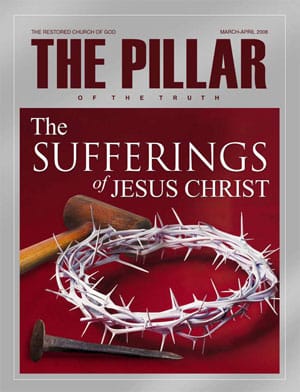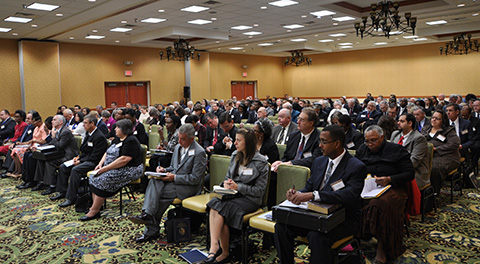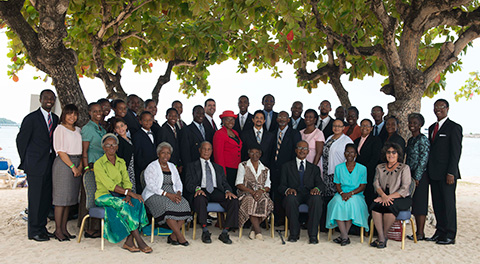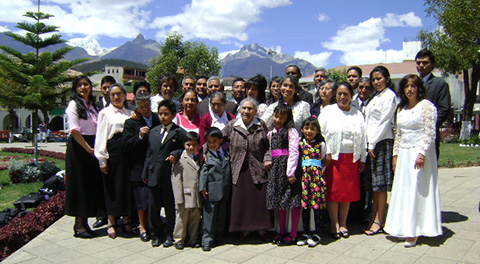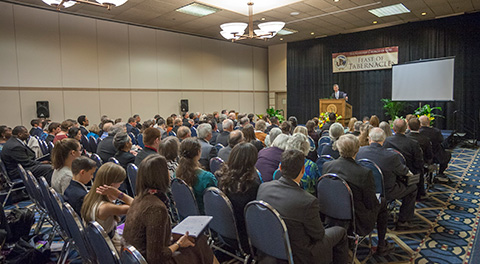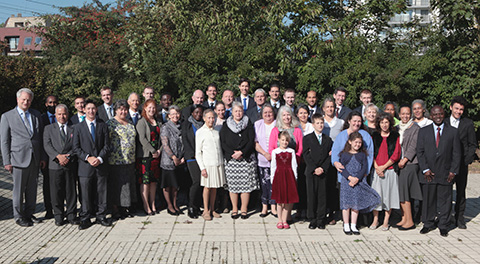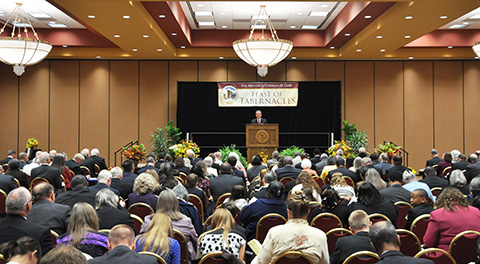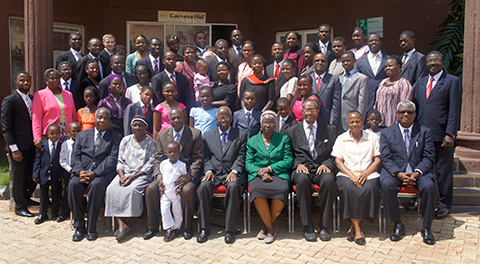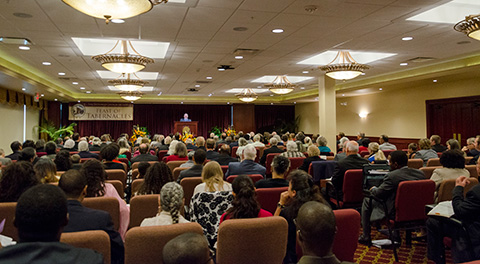It is just after midnight on the Passover of A.D. 31. An ominous gathering of people, wielding swords and clubs, has assembled in the midst of Jesus and His disciples on the Mount of Olives, their intent mostly unknown. A man named Judas steps forward from the multitude and greets Jesus with a kiss, saying, “Good evening, Master.”
Jesus responds, “My friend. Why are you here tonight?”
Immediately, several members of the large crowd move forward and seize Jesus, prompting one of His disciples to grab a sword and strike one of the attackers.
“Put down your sword,” Jesus exclaims. “It is of no value. Those who rely on swords will die with their swords in hand. They are of no use. If I wanted to, I could call upon My Father to send more than 70,000 angels to free Me. But if this were to happen, the Scriptures would not be fulfilled.”
Then Jesus says to the crowd, “Why have you seized Me tonight with swords and clubs, as if I were a criminal? Did you not see Me many times teaching in the temple? Why did you not lay hands upon Me then?”
At that very moment, Jesus’ disciples—His close friends, who have been with Him for the better part of three and a half years—flee. Every last one of them forsook Him, as it is written, “I will smite the Shepherd, and the sheep of the flock shall be scattered abroad” (Matt. 26:31).
Jesus is eventually taken to the palace of the high priest, whose name is Caiaphas. There, a sizeable group of scribes and Pharisees is anxiously assembled. For years, Jesus’ popularity among the common people of Judea has threatened their positions of authority. Now, they finally have a chance to try Jesus and convict Him of a crime, one punishable by death.
You are probably at least somewhat familiar with the rest of story: Jesus is tried, convicted and put to death—crucified on a stake. But have you ever closely examined the court proceedings leading to Jesus’ crucifixion? Have you considered that, even by man’s laws, Jesus’ trial was illegal?
Commonly Held Views of the Trial
Many believe and try to prove that Jesus was legally put to death. For example, in his 1916 book The Prosecution of Jesus, Richard Wellington Husband, a lawyer, wrote, “The arrest was legal…The hearing by the Sanhedrin was legal…The course of trial in the Roman court was legal…The conviction was legal, and was justified.”
Here is how Husband supports his assertions: “The arrest was legal, for it was conducted by the proper officers, acting under instruction from the Sanhedrin. There was no illegality in the circumstances under which the arrest was affected. The hearing by the Sanhedrin was legal, for it was merely a preliminary hearing, and was not a formal trial. The course of trial in the Roman court was legal, for it harmonized with the procedure shown in the sources to be pursued by governors of provinces in hearing criminal cases.”
“The conviction was legal, and was justified provided the evidence was sufficient to substantiate the charges, and the records do not prove the contrary.”
As you can see, according to Husband, the entire process leading to the death of Christ was legal. And, to him, the Bible does not provide sufficient evidence to indicate otherwise, as he states that other “records do not prove the contrary.”
Similarly, Max Radin, a former professor and author of the book The Trial of Jesus of Nazareth, believes the accounts in the Bible are not credible, since Matthew, Mark, Luke and John were not physical eyewitnesses to the secretive proceedings. In his book, Radin claims there is “no clear statement of how the knowledge of the trial came to those who reported it.”
The author, however, does not take into account the possibility that Christ could have explained everything to His disciples when He was resurrected from the dead. Jesus was a personal eyewitness to the trial and could have accurately conveyed everything to His followers to record in the pages of the Bible. (Of course, the author also does not believe that Scripture is inspired.)
Later in the book, Radin provides insight into a common trial in Judea during Christ’s time: “We are, most of us, familiar with the procedure of criminal investigations. The accused person is arrested, arraigned before a committing magistrate, specifically accused and formally tried. He may, and he generally does, appeal to a higher court, if he is convicted. All these things take time, and there is almost necessarily an interval of weeks and months between the later stages of the procedure. But above all, the procedure is strictly regulated by law, and any serious deviation is not merely an irregularity but will probably prevent punishment from being inflicted.”
By the above description alone, Jesus’ trial was fraudulent. All of the above-mentioned events take time, and usually lots of it! Radin himself admits this. Yet the trial of Jesus was completed about nine hours after He was arrested. And due to the privacy of the proceedings, there were no witnesses to testify on behalf of Jesus—but there were many witnesses to testify against Him! How many court cases are you aware of that are similar to this? Probably none.
Several pages later in the book, Radin attempts to reconcile his description of a lengthy criminal investigation with Jesus’ nine-hour process: “Mark’s version, even by his own testimony, cannot be more than a guess. Instead of a hurried night meeting, a harsh and brief interrogatory, a disregard of established rules of evidence and procedure, the trial may have been formally correct, and the judgment formally correct even from the point of view of an upright judge just though severe.”
As is the case with most scholars, Radin dismisses the Bible as a source of historically accurate information. He assumes that Mark guessed what “may have” happened and, as such, believes the investigation could have occurred some other way. Yet the accounts in the Bible are the only sources of information that cover the trial. One cannot justify his position based on another resource; he can merely render a guess or an assumption. When one believes what was written by Matthew, Mark, Luke and John, only one conclusion can be drawn: Christ’s trial was illegal, even by men’s standards.
What’s the Charge?
Some might wonder: “Why did the Jews deliver Jesus to the Romans to be killed? Could they not have put Him to death themselves?”
A common view is that the Jews did not have the authority to execute criminals. Continuing in The Prosecution of Jesus, Husband states, “According to the common view, the right to try capital cases [cases involving the death penalty] and even the right to pronounce sentences, still rested with the Sanhedrin, but the actual penalty could not be inflicted until the governor had given his sanction.”
Those who believe Jesus’ adversaries had no legal basis to execute Him usually cite John 18:31, where Pilate, the Roman governor, said to the Jews, “Take you Him, and judge Him according to your law. The Jews therefore said unto him, It is not lawful for us to put any man to death.”
Lifted from its context, this verse does appear to indicate that the Jews were unable to execute criminals. Yet the truth is that they did have the power to try, convict and execute people, except in cases that involved treason or sedition against the Roman government.
Consider the following: Stephen was accused of blasphemy and as a result was stoned to death by the Jewish authority, as described in the book of Acts (6:11; 7:59). The Romans were not consulted in this execution and there is no indication they disapproved.
On several occasions, the scribes and Pharisees sought to kill Jesus (Mark 11:18; 14:1; Luke 19:47; 22:2; John 10:31). If this were illegal, it is doubtful they would have even attempted to do so.
In one instance, elders of Judea brought before Jesus a woman who had been caught committing adultery, and said, “Now Moses in the law commanded us, that such should be stoned: but what say you?” (John 8:5). If the Jews did not have the authority to put this woman to death, Jesus might have replied, “Aren’t you aware of Roman law? You don’t have the power to execute anyone.”
But He didn’t. He simply said, “He that is without sin among you, let him first cast a stone at her” (vs. 7). Jesus knew full well that the Jews were legally able to execute adulteresses and criminals. Also, if it were not legal for the Jews to perform executions, consider what might have happened if word of this event reached Roman authority? Surely, if such were the case, the Jews would not have been so public about it.
Finally, the apostle Paul was stoned by a crowd in Asia, among whom were Jews.
Wherever the Jews settled during the time of Roman rule, they had the legal right to execute people under their law.
So then what is the statement in John 18:31 referring to? “From the earliest period the Roman governor took cognizance of all matters that had relation to the public security or the majesty of the Empire. Consequently there was not a time at which the Roman magistrate would not step in when a charge of treason was made, or a seditious movement began. The case against Jesus is one especially in point, for the charge against him [treason] could under no circumstances be tried by any tribunal except that of the governor” (The Prosecution of Jesus).
The Roman government would only intervene in criminal affairs when matters of treason, civil disobedience, incitement to revolution or attacks against Caesar were involved. Otherwise, local administration was conducted by local officials and the regular courts of the conquered nations. Roman authorities were not involved in every criminal proceeding throughout the vast empire.
Jesus’ opponents accused Him of blasphemy, but since they did not want to execute Him themselves, they created charges of treason against Him. This way, the trial could be brought before Pontius Pilate, and, in their minds, he and the Romans would be responsible for Jesus’ death, not them.
Events Leading to Jesus’ Death
Before identifying the precise reasons Jesus’ trial was illegal, it will be helpful to briefly examine events leading up to His crucifixion.
We begin with Judas Iscariot striking a deal with the religious authorities: “Then entered Satan into Judas surnamed Iscariot, being of the number of the twelve [disciples]. And he went his way, and communed with the chief priests and captains, how he might betray Him [Jesus] unto them. And they were glad, and covenanted to give him money. And he promised, and sought opportunity to betray Him unto them in the absence of the multitude” (Luke 22:3-6).
Soon after Judas entered into a pact with the religious leaders, Jesus and His faithful disciples ate their final meal together on Passover evening. Then, Judas arrived at the Mount of Olives with a large mob of various people, including Jesus’ future judges and jury, who stirred up the mob to arrest Christ (Luke 22:8-39).
After the arrest, a former high priest named Annas examined Jesus first (John 18:13). Next, the mob brought Jesus to the high priest’s palace, where Caiaphas (the high priest) and the Sanhedrin were gathered (Matt. 26:57-58). Here, numerous false witnesses came before the Sanhedrin to give testimony against Him. Eventually, Christ was condemned to death, apparently on the charge of blasphemy (vs. 65-66). The next morning, the Sanhedrin formally condemned Jesus in an attempt to make the previous evening’s procedures legal. A multitude of people then led Jesus to Pilate (Luke 23:1) and pronounced different charges, saying, “We found this fellow perverting the nation, and forbidding to give tribute to Caesar, saying that He Himself is Christ a King” (vs. 2). Notice they did not accuse Christ of blasphemy in front of Pilate. Instead, they charged Him with treason against the Roman Empire.
Pilate initially desired to free Jesus (vs. 4), but the people continued to push for His death, saying, “He stirs up [incites] the people, teaching throughout all Jewry, beginning from Galilee to this place” (vs. 5).
When Pilate heard that Jesus was from Galilee, he sent Him to Herod, since Galilee was under his jurisdiction (vs. 6-7). Herod was happy to see Jesus, as he heard many things about Him. He desired to see Jesus perform some miracles (vs. 8). But Jesus neither performed any miracles nor answered his questions (vs. 9). Meanwhile, the chief priests and scribes stood by and accused Jesus (vs. 10). After being mocked, He was quickly sent back to Pilate (vs. 11).
Pilate sought to release Jesus once again, as he found no reason to condemn Him to death: “You have brought this Man unto me, as one that perverts the people: and, behold, I, having examined Him before you, have found no fault in this Man touching those things whereof you accuse Him: No, nor yet Herod: for I sent you to him; and, lo, nothing worthy of death is done unto Him. I will therefore chastise Him, and release Him” (vs. 14-16).
But the crowd cried out with a loud voice, “Crucify Him, crucify Him” (vs. 21).
Pilate, a third time, responded to the multitude, “Why, what evil has He done? I have found no cause of death in Him: I will therefore chastise Him, and let Him go” (vs. 22).
The people responded all the more loudly: “Crucify Him, crucify Him!”
Pilate finally gave in to the people’s demands, and delivered Jesus to be crucified.
Keep in mind that this entire process lasted only about nine hours, from after midnight to around 9:00 in the morning. Jesus was seized, then tried, condemned and crucified—all within a matter of nine hours! At 3:00 in the afternoon, Jesus was speared in His side and killed (John 19:34).
In that short period of time, the world eliminated the Savior!
With this backdrop, we are now ready to examine 12 paramount reasons the arrest, trial and conviction of Jesus Christ were illegal.
First Reason
Recall that Judas was bribed to betray Jesus in the absence of the crowds who favored Him. The plan was to seize Jesus in the dark of night, sentence Him just before sunrise—to make everything appear legal—transport Him to Pilate, stir up a mob of people to condemn Him, and crucify Him in the morning before those who supported Him were aware.
Who constituted the crowd of people who arrested Jesus? The answer leads to the first blunder in Jesus’ arrest, trial and conviction: Jesus was arrested illegally.
Any trial may be dismissed as a mistrial, or illegal, if there is prejudice against the individual being tried on the part of those participating. The accused must be given full recourse of law to be able to sufficiently present his side.
Jesus, however, was both arrested and tried by those prejudiced against Him, and was not allowed opportunity to present His case. Further, His judges were the same individuals who bribed Judas! Surely one cannot say these people were impartial!
In addition, Jesus was arrested secretly at night and was not formally charged of any offense. Judas simply pointed out Jesus, and a crowd arrested Him. There was no legal basis for this.
In his book Criminal Jurisprudence of the Ancient Hebrews, Samuel Mendelsohn states, “The testimony of an accomplice [in this case, Judas] is not permissible by Rabbinic law…and no man’s life, nor his liberty, nor his reputation can be endangered by the malice of the one who has confessed himself a criminal.”
Since Judas accepted a bribe from a judge, certainly Judas would be considered a criminal. And since Jesus’ judges bribed Judas, they would be considered criminals as well. This alone should have led to a mistrial!
Second Reason
Jesus was examined by Annas in a secret night proceeding (John 18:12-14, 19-23).
According to the Talmud, the Sanhedrin is forbidden from convening between the time of the evening and morning sacrifice. In the book Jesus Before the Sanhedrin, M.M. Lemann states that “no session [including a preliminary examination] of the court could take place before the offering of the morning sacrifice.”
Furthermore, “An accused man was never subjected to private or secret examination,” as stated in Institutions de Moise, by J. Salvador.
Third Reason
The indictment against Jesus was false.
In the book Life and Times of Jesus the Messiah, Alfred Edersheim states that “the Sanhedrin did not, and could not, originate charges.”
But as we saw, the Sanhedrin did so in the case against Jesus.
Alexander Taylor Innes, in The Trial of Jesus Christ, reveals that “until they [the witnesses] spoke, and spoke in the public assembly, the prisoner was scarcely [never] an accused man. When they spoke, and the evidence of two agreed together, it formed a legal charge, libel or indictment, as well as the evidence for its truth.”
In a correctly conducted procedure, the evidence of the leading witnesses constituted the charge. But with Jesus, no witnesses—and therefore no charges—were presented at the outset of the proceedings. Those in opposition to Jesus, including those who would be in the court, simply arrested Him. They then needed to find witnesses—false ones!
Fourth Reason
The Sanhedrin court illegally held its trial before sunrise.
Annas’s preliminary examination of Jesus resulted in no evidence. But instead of dismissing the case, the Sanhedrin proceeded to hold an illegal court.
Mendelsohn reveals why it was illegal: “Criminal cases can be acted upon by the various courts during the day time only, and by the Lesser Sanhedrins from the close of the morning sacrifice till noon, and by the Great Sanhedrin till evening.”
The Jewish Mishna states, “Let a capital offense be tried during the day, but suspend at night.”
Moses Maimonides explains why trials are to be held during the daylight: “The reason why the trial of a capital offense could not be held at night is because…the examination of such a charge is like the diagnosing of a wound—in either case a more thorough and searching examination can be made by daylight.”
Convicting someone of a crime punishable by death was serious business. It required those deciding the fate of the accused to be at their best mental state, which is hardly true in the early hours of the morning.
Fifth Reason
The Sanhedrin illegally convened to try a capital offense on a day before an annual Sabbath.
The Mishna reveals why: “They shall not judge on the eve of the Sabbath, nor on any festival.”
In Martyrdom of Jesus, Isaac Wise, a Jewish Rabbi, provides decisive evidence: “No court of justice in Israel was permitted to hold sessions on the Sabbath or on any of the seven biblical Holy Days. In cases of capital crime, no trial could be commenced on Friday or the day previous to any Holy Day, because it was not lawful either to adjourn such cases longer than overnight, or to continue them on the Sabbath or Holy Day.”
Jesus, however, was arrested on Passover evening in A.D. 31, which is the day before the First Day of Unleavened Bread—an annual Holy Day!
Sixth Reason
The trial concluded in one day.
Again, reading from the Mishna, we learn, “A criminal case resulting in the acquittal of the accused may terminate the same day on which the trial began. But if a sentence of death is to be pronounced, it cannot be concluded before the following day.”
Forcing a trial to last longer than one day allows time for witnesses in support of the accused to come forth. Of course, Jesus’ court did not want any such witnesses to manifest themselves, so they ended it quickly.
So far, you have seen six reasons the trial of Jesus was illegal. In the May-June issue of The Pillar, we will examine six more.



